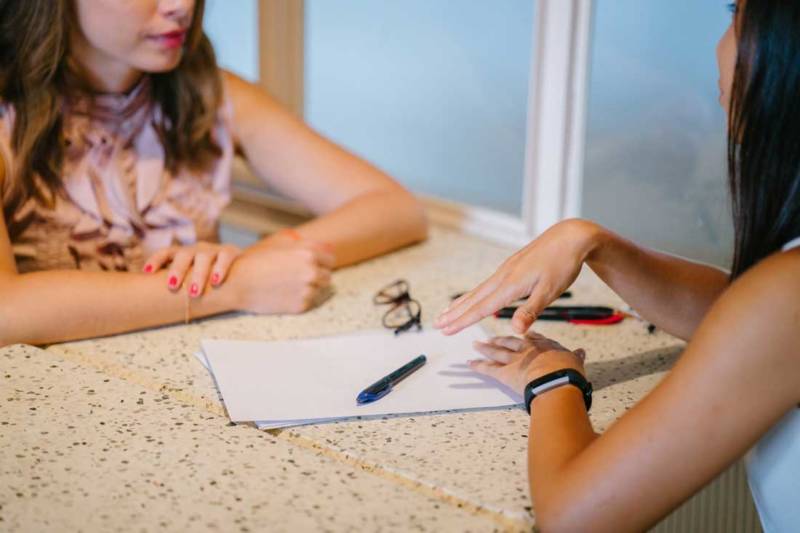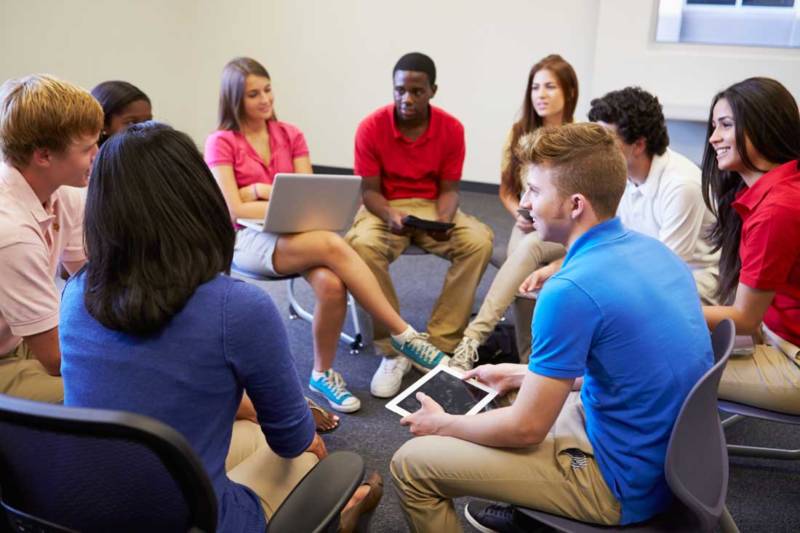
An improvement to good listening habits is learning to listen empathetically. Empathetic listening goes beyond ordinary listening. This type of listening allows the listener to see the world as others see it and provides a higher level of understanding of how other people feel.
Your students will never be able to fully understand others until they develop a desire to do so, as well as the skills required for empathetic listening. We will cover the following topics to help you teach empathetic listening:
- Four Stages to empathetic listening
- Rules for developing empathetic listening
- Listening and friendship
- Listening and leadership

Four Stages to Empathetic Listening
Most people do not listen to understand, they only listen enough to reply with what they are thinking about. They are either speaking or thinking about what they are going to say next. They tend to project their own feelings onto others and try to get everyone to understand them, when others are trying to be understood.
Here are the four developmental stages to empathetic listening to teach your students:
Stage 1: Mimic the Content. Simply repeat what you hear in order to get further clarification in response. Repeat it exactly as you think you heard it.
Stage 2: Rephrase the Content. Repeat the words that were said without adding any additional feedback.
Stage 3: Reflect on the Feeling. Try to understand the feeling expressed in what was said, going beyond what you think you heard.
Stage 4: Rephrase the Content and Reflect on the Feeling. This combines both Stages 2 and 3 in an attempt to completely clarify the message.

Rules for developing empathetic listening
Here are some rules to teach for developing empathetic listening:
- Pay attention to the emotional expressions of others—verbal and nonverbal. Focus on really trying to understand the message behind them.
- Resist putting your own feelings in place of another’s. Put aside your own needs and ideas long enough to listen to the other person’s point of view.
- Communicate in a more responsive way. Respond to the messages you receive according to how you understand them.
- Do not interrupt. Let speakers finish their message before you respond in any way.
- Question for more details. If you still don’t understand, ask questions until you understand.

Listening and friendship
One of the most important roles of a friend is being a good listener. Most people can hear, but very few really listen to what someone is saying. Most people are usually more interested in talking than they are in listening. It seems as if everyone is just waiting for their turn to speak. Conversations, like friendship, are a two-way street. There needs to be both give and take.
Teach your students the following tips to use empathetic listening to improve friendships:
- Don’t judge or disapprove of what they are feeling.
- Don’t try to tell them how to feel.
- Allow them to make their own decisions.
- Let them speak without interrupting.
- Show your interest in what is being said.
- Try to really understand what the person is saying.
- Give feedback to make sure you understand.
- Let them cry if they need to.

Listening and leadership
One major role of a leader is that of a problem-solver. This is why it is important for leaders to practice empathetic listening. Empathetic listening is powerful because it gives leaders an accurate view of what is going on inside others and allows them to experience what others are truly thinking and feeling.
In order for a leader to prescribe a good solution to a problem, he or she must first accurately diagnose the problem. Empathetic listening gives leaders the tools to accurately identify a problem, understand the effect it is having and discover a solution.Thanks for tuning into our series on teaching interpersonal awareness to your students. If you want to learn more about developing or teaching soft skills, sign up for a free soft skills webinar here.
